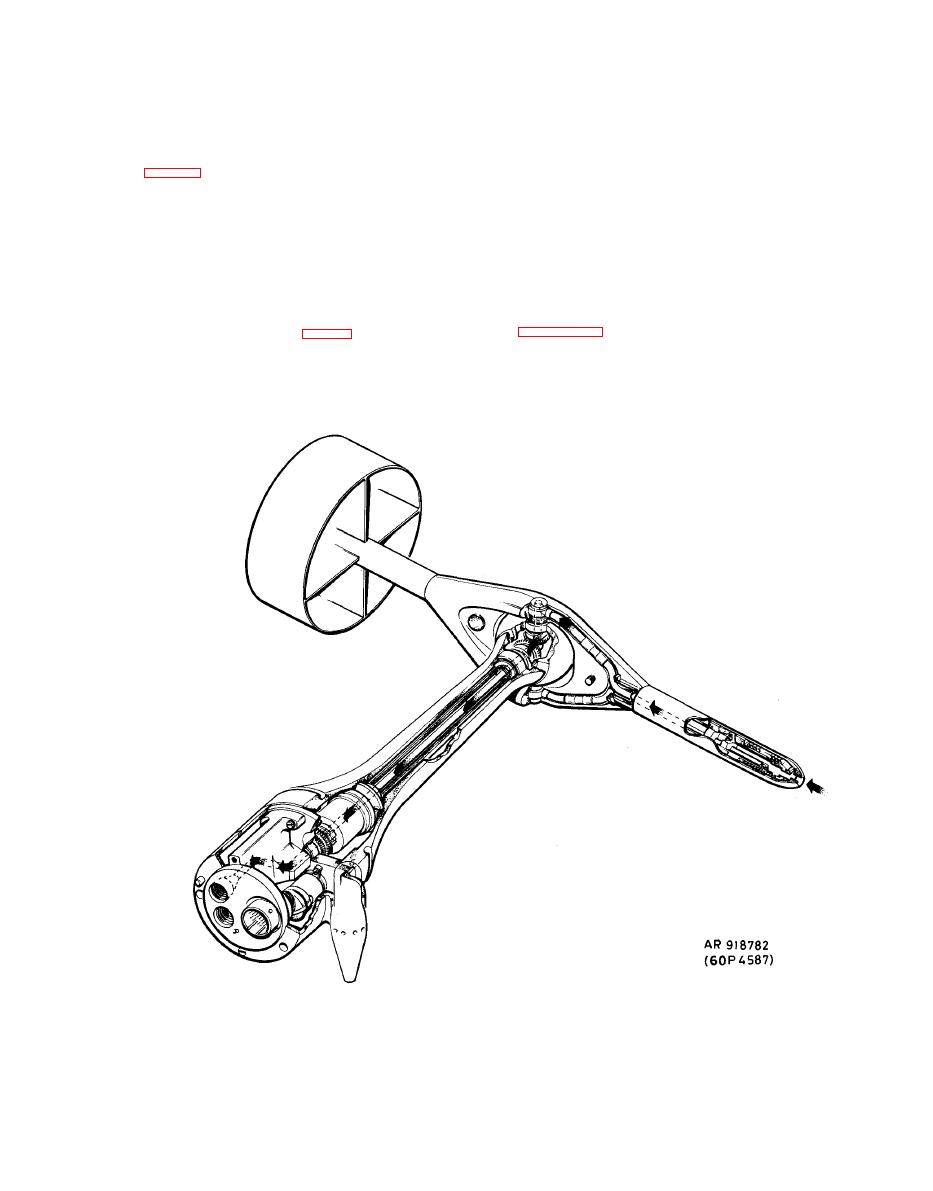 |
|||
|
|
|||
|
Page Title:
Figure 1-10. AADS Cutaway View showing Pitot Plumbing. |
|
||
| ||||||||||
|
|
 TM 9-1270-219-13&P
lower port. A heater element, housed in a mineral-isulated
a. H e a d
Assembly.
rod, is coiled into the front part of the head near the
surface to heat both pitot and static ports. The heater has
(1) The pitot port at the nose of the head assembly
a
pair
of
flexible
leads
for
connection
to
the
body
assembly, and dissipates 150 watts from the 115 Vac
which are two diametrically opposite drain holes which
400Hz supply which is connected via two sets of slip
e n s u r e the chamber is drained of ingested water with the
rings.
gimbal in any position. A stand pipe entering the chamber
from the rear has an opening near the nose so that pitot
b. T a i l A s s e m b l y . The tail assembly keeps the pitot-
pressure is conveyed through the head while water is
static head aligned with the air flow and has a stable
separated out and flows from the drains.
characteristic
in
flows
of
varying
direction.
The
a l u m i n i u m alloy tail shaft is slightly angled, as shown in
(2) Two static pressure ports are positioned on the
and
incorporates
two
balance
weights
outboard side of the head (fig. 1-11) where the airflow is
to statically balance the head, thus allowing accurate
unaffected by the body; the holes connect to a static
alignment with the air flow at less than 15 knots (the
chamber from which a pipe conveys static pressure to the
minimum downwash in hover), making the AADS stable
neck assembly. The static chamber is self draining via the
|
|
Privacy Statement - Press Release - Copyright Information. - Contact Us |